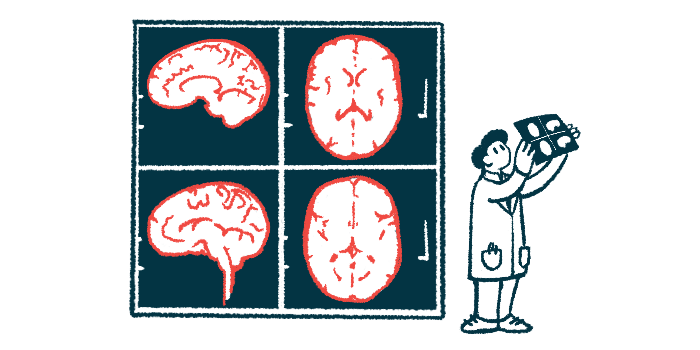Study examines intermittent use of corticosteroids in DMD boys
Spreading out the doses may cause fewer brain changes, imaging study finds

Corticosteroids may cause fewer unwanted brain changes in boys with Duchenne muscular dystrophy (DMD) if they are given on and off at 10-day intervals, rather than at daily doses, an imaging study found.
“Brain volumetrics [volume measurements] are more profoundly affected in patients treated with a daily corticosteroid regimen than in those treated intermittently,” the researchers in Belgium and the Netherlands wrote.
“Future research is needed to elucidate the underlying mechanisms driving these observed differences in brain volumetrics, in order to develop more targeted and effective treatments for DMD,” they added.
The study, “Comparison of two corticosteroid regimens on brain volumetrics in patients with Duchenne muscular dystrophy,” was published in the Annals of Clinical and Translational Neurology.
While muscular dystrophy is best known for muscle weakness and loss of control, it also may cause neurobehavioral problems, including learning difficulties and mood disorders such as depression.
Brain scans have shown that boys with DMD, the most common form of muscular dystrophy, have reduced gray matter and less organized white matter than healthy individuals. Gray matter processes information, while white matter bridges different regions of the brain.
Corticosteroids often are used to ease symptoms of DMD and slow its progression. However, taking corticosteroids for a long time may cause side effects such as weight gain. In children, they also may cause brain atrophy (shrinkage).
“As DMD boys are treated with relatively high corticosteroid doses starting from a young age and continuing into early adulthood, they may develop corticosteroid-induced cerebral [brain] alterations,” on top of those caused by the disease itself.
Both daily and intermittent dosing regimens of corticosteroids exist and usually are chosen based on a risk-benefit analysis.
Comparing the dosing regimens
To find out which dosing regimen may affect the brain the most, they compared brain scans from 20 boys with DMD who were being treated with daily Emflaza (deflazacort, 0.9 mg/kg per day with a maximum of 36 mg per day) to those of 20 boys with DMD on an intermittent dosing regimen (10 days on/10 days off, 0.75 mg/kg per day, with a maximum of 30 mg per day) of prednisone.
The mean age of these boys was 13, ranging from 9 to 18, and they had been started on corticosteroids at a mean age of 6. The study also included 40 age-matched healthy boys from Belgium and the Netherlands.
Compared to boys on an intermittent dosing regimen, those treated with daily Emflaza had “a wider extent of brain regions affected and a greater difference overall” on MRI findings, the researchers wrote.
On average, boys on daily therapy had significantly smaller intracranial (within the skull) volume than healthy boys (1,358 vs. 1,490 cubic centimeters, or cm3). They also had significantly smaller intracranial volume than boys on intermittent prednisone (1,358 vs. 1,479 cm3). Similar observations were made for total brain volume.
Both mean gray matter (614 vs. 714 cm3) and white matter (480 vs. 558 cm3) volumes were significantly smaller in boys on daily Emflaza than in healthy boys. Gray matter also was significantly smaller compared to boys on intermittent prednisone (614 vs. 694 cm3).
Measuring the volume occupied by cerebrospinal fluid
The volume occupied by the cerebrospinal fluid (the clear fluid found surrounding the brain and spinal cord) was significantly larger in boys on daily treatment than in healthy boys (264 vs. 218 cm3). In boys on intermittent prednisone, it occupied a mean 220 cm3, a measurement similar to that of controls.
“Our study highlights the importance of considering the potential impact of different corticosteroid regimens on brain volumetrics in patients with DMD,” the researchers concluded.
However, “daily corticosteroid regimens are linked to more profound effects on growth and physical maturation, but due to incomplete clinical data, our study could not investigate how this is reflected in our results,” they noted, calling for more research.







